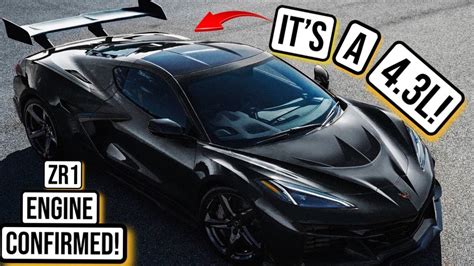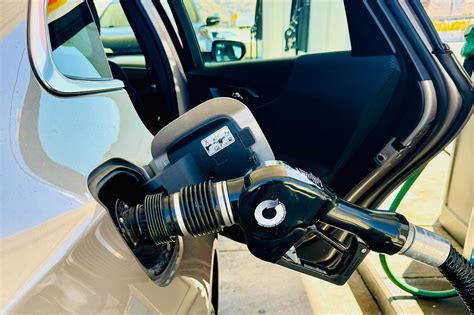
Hybrid vehicles offer a compelling blend of fuel efficiency and engaging driving dynamics, and a recent assessment by automotive expert Matt Farah highlights several models that deliver both. Farah, known for his performance-oriented approach, identified four hybrids that stand out for their ability to save fuel without sacrificing driving pleasure: the Toyota Prius Prime, BMW 330e, Lexus RX 450h+, and Range Rover Sport P440e.
According to Farah, the Toyota Prius Prime is a standout choice for its exceptional fuel economy and surprisingly fun driving experience. The BMW 330e offers a sporty alternative with its plug-in hybrid system and performance-focused engineering. The Lexus RX 450h+ combines luxury and efficiency in a comfortable and well-equipped SUV. Finally, the Range Rover Sport P440e offers a high-end option with impressive performance and off-road capabilities alongside its hybrid powertrain.
Toyota Prius Prime: Efficiency and Engaging Driving
The Toyota Prius Prime emerges as a top pick for drivers seeking maximum fuel efficiency without sacrificing a degree of driving engagement. Matt Farah’s assessment underscores the plug-in hybrid’s ability to deliver impressive mileage figures while retaining a fun-to-drive character. “It’s legitimately fun to drive, and you don’t feel like you’re sacrificing anything to get great fuel economy,” Farah noted.
The Prius Prime distinguishes itself with its plug-in hybrid powertrain, which allows for a significant all-electric range. This enables drivers to complete many daily commutes solely on electric power, reducing their reliance on gasoline and minimizing emissions. Beyond its eco-friendly credentials, the Prius Prime has evolved from its predecessors, offering a more refined driving experience with responsive acceleration and improved handling.
The Prius Prime’s fuel efficiency is achieved through a combination of factors, including its aerodynamic design, lightweight construction, and advanced hybrid technology. The vehicle’s regenerative braking system captures kinetic energy during deceleration, converting it into electricity to recharge the battery. This further enhances fuel economy and reduces brake wear.
The interior of the Prius Prime is designed with both comfort and functionality in mind. The cabin features a user-friendly infotainment system, supportive seats, and ample storage space. The vehicle’s advanced safety features, such as automatic emergency braking and lane departure alert, provide added peace of mind for drivers and passengers.
Compared to other hybrid vehicles, the Prius Prime stands out for its exceptional value proposition. It offers a compelling combination of fuel efficiency, driving dynamics, and affordability, making it an attractive option for budget-conscious buyers who don’t want to compromise on driving enjoyment.
BMW 330e: Performance-Oriented Hybrid
For driving enthusiasts seeking a hybrid vehicle that doesn’t compromise on performance, the BMW 330e presents a compelling option. Matt Farah highlights the 330e’s ability to deliver a sporty driving experience while still offering significant fuel savings. “If you want something that feels like a proper sports sedan but also gets great gas mileage, the 330e is hard to beat,” Farah stated.
The BMW 330e combines a turbocharged gasoline engine with an electric motor to deliver a combined output of 288 horsepower. This allows for brisk acceleration and confident handling, making it a joy to drive on twisty roads. The vehicle’s plug-in hybrid system also provides a decent all-electric range, enabling drivers to complete shorter trips without using any gasoline.
The 330e retains the signature BMW driving dynamics that enthusiasts have come to expect. The vehicle’s precise steering, well-tuned suspension, and responsive brakes contribute to an engaging and rewarding driving experience. The electric motor provides instant torque, enhancing the car’s acceleration and making it feel even more responsive.
The interior of the BMW 330e is luxurious and well-appointed, with high-quality materials and comfortable seats. The cabin features a user-friendly infotainment system with advanced connectivity features. The vehicle’s advanced driver-assistance systems, such as lane keeping assist and adaptive cruise control, enhance safety and convenience.
The BMW 330e stands out from other hybrid vehicles with its focus on performance and driving dynamics. While it may not offer the same level of fuel efficiency as some other hybrids, it provides a more engaging and rewarding driving experience for those who prioritize performance.
Lexus RX 450h+: Luxury and Efficiency Combined
The Lexus RX 450h+ caters to drivers seeking a luxurious and fuel-efficient SUV. According to Matt Farah, this plug-in hybrid offers a comfortable and refined driving experience while delivering impressive fuel economy. “The RX 450h+ is a great option if you want a luxurious and comfortable SUV that also happens to be very efficient,” Farah commented.
The RX 450h+ combines a gasoline engine with an electric motor to deliver a total system output of 304 horsepower. This provides ample power for confident acceleration and smooth highway cruising. The vehicle’s plug-in hybrid system allows for a significant all-electric range, enabling drivers to complete many daily trips without using any gasoline.
The RX 450h+ delivers a supremely comfortable and quiet ride, thanks to its well-tuned suspension and sound-deadening materials. The cabin is spacious and luxurious, with high-quality materials and comfortable seats. The vehicle features a user-friendly infotainment system with advanced connectivity features, as well as a comprehensive suite of safety technologies.
Compared to other hybrid SUVs, the Lexus RX 450h+ stands out for its blend of luxury, comfort, and efficiency. It offers a refined driving experience and a well-appointed interior, making it an attractive option for those who prioritize comfort and luxury in their hybrid vehicle.
Range Rover Sport P440e: High-End Performance and Off-Road Capability
For buyers seeking a high-end hybrid SUV with impressive performance and off-road capability, the Range Rover Sport P440e is a standout choice. Matt Farah notes the P440e’s ability to combine luxury, performance, and efficiency in a capable and stylish package.
The Range Rover Sport P440e features a plug-in hybrid powertrain that combines a gasoline engine with an electric motor. This delivers a combined output of 434 horsepower, providing strong acceleration and confident performance both on and off the road. The vehicle’s plug-in hybrid system also offers a decent all-electric range, allowing for emissions-free driving in certain situations.
The Range Rover Sport P440e retains the brand’s legendary off-road capabilities, thanks to its advanced four-wheel-drive system and terrain management system. It can tackle a variety of challenging terrains with ease, making it a versatile option for adventurous drivers.
The interior of the Range Rover Sport P440e is luxurious and well-appointed, with high-quality materials and comfortable seats. The cabin features a user-friendly infotainment system with advanced connectivity features, as well as a comprehensive suite of safety technologies.
Compared to other hybrid SUVs, the Range Rover Sport P440e stands out for its combination of luxury, performance, and off-road capability. It offers a unique blend of attributes that make it an attractive option for buyers who want a high-end hybrid SUV that can handle both city streets and rugged terrain.
Hybrid Market Dynamics
The hybrid vehicle market has experienced significant growth in recent years, driven by increasing consumer demand for fuel-efficient and environmentally friendly transportation options. Factors such as rising gasoline prices, growing awareness of climate change, and government incentives have all contributed to the popularity of hybrid vehicles.
Hybrid vehicles offer a number of advantages over traditional gasoline-powered cars, including improved fuel economy, reduced emissions, and a quieter driving experience. They also often qualify for tax credits and other incentives, making them an even more attractive option for budget-conscious buyers.
As technology continues to advance, hybrid vehicles are becoming even more efficient and affordable. Automakers are investing heavily in hybrid technology, developing new and innovative powertrains that deliver even better performance and fuel economy.
The future of the hybrid vehicle market looks bright, with continued growth expected in the years to come. As more consumers embrace the benefits of hybrid technology, these vehicles are poised to play an increasingly important role in the transition to a more sustainable transportation future.
Matt Farah’s Selection Criteria
Matt Farah’s selection of these four hybrid vehicles reflects his emphasis on both fuel efficiency and driving enjoyment. He sought out models that not only deliver impressive mileage figures but also provide a rewarding and engaging driving experience.
Farah’s background as a performance-oriented automotive journalist gives him a unique perspective on hybrid vehicles. He understands that many drivers are hesitant to embrace hybrids due to concerns about sacrificing performance and driving dynamics. Therefore, he focused on identifying models that dispel this notion and demonstrate that hybrids can be both efficient and fun to drive.
His choices highlight the diversity of the hybrid vehicle market, with options ranging from the affordable and efficient Toyota Prius Prime to the luxurious and capable Range Rover Sport P440e. This demonstrates that there is a hybrid vehicle to suit a wide range of needs and preferences.
Conclusion
The Toyota Prius Prime, BMW 330e, Lexus RX 450h+, and Range Rover Sport P440e represent a diverse selection of hybrid vehicles that offer a compelling blend of fuel efficiency and driving enjoyment. Matt Farah’s assessment underscores the fact that hybrid technology has advanced significantly in recent years, with automakers now producing models that cater to a wide range of drivers and preferences.
Whether you’re seeking maximum fuel economy, sporty handling, luxurious comfort, or off-road capability, there is a hybrid vehicle that can meet your needs. These four models represent some of the best options currently available on the market, offering a glimpse into the exciting future of hybrid technology. As the hybrid vehicle market continues to evolve, we can expect to see even more innovative and compelling models emerge in the years to come. These vehicles are not just about saving fuel; they represent a step towards a more sustainable and enjoyable driving experience. They prove that efficiency and fun are not mutually exclusive in the automotive world.
Frequently Asked Questions (FAQ)
1. What makes the Toyota Prius Prime a good hybrid choice, according to the article?
The Toyota Prius Prime is considered a strong choice due to its exceptional fuel economy and surprisingly engaging driving experience. Matt Farah notes that it doesn’t feel like a sacrifice to get great fuel economy, making it “legitimately fun to drive.” Its plug-in hybrid system also allows for a significant all-electric range, reducing reliance on gasoline.
2. Why is the BMW 330e recommended for performance-oriented drivers?
The BMW 330e is recommended for performance enthusiasts because it combines a turbocharged gasoline engine with an electric motor, delivering a combined output of 288 horsepower. This results in brisk acceleration and confident handling. Farah emphasizes that “if you want something that feels like a proper sports sedan but also gets great gas mileage, the 330e is hard to beat.” It retains the signature BMW driving dynamics while offering fuel savings.
3. What are the key features that make the Lexus RX 450h+ stand out?
The Lexus RX 450h+ stands out due to its combination of luxury, comfort, and efficiency. Farah describes it as “a great option if you want a luxurious and comfortable SUV that also happens to be very efficient.” Its plug-in hybrid system offers a substantial all-electric range, and it delivers a supremely comfortable and quiet ride with a spacious, well-appointed interior.
4. Who would benefit most from choosing the Range Rover Sport P440e as their hybrid vehicle?
The Range Rover Sport P440e is ideal for buyers seeking a high-end hybrid SUV with impressive performance and off-road capabilities. It combines luxury, performance, and efficiency in a capable and stylish package. Its advanced four-wheel-drive system and terrain management system make it suitable for adventurous drivers who want a vehicle that can handle both city streets and rugged terrain.
5. What factors are contributing to the growth of the hybrid vehicle market?
Several factors are driving the growth of the hybrid vehicle market, including increasing consumer demand for fuel-efficient and environmentally friendly transportation options, rising gasoline prices, growing awareness of climate change, and government incentives. Hybrid vehicles offer advantages such as improved fuel economy, reduced emissions, and a quieter driving experience, making them an attractive option for budget-conscious and environmentally aware buyers.
In-depth Analysis and Expanded Context
To fully appreciate the significance of Matt Farah’s hybrid picks, it’s crucial to delve deeper into the broader context of the hybrid vehicle market, the specific technologies employed in each model, and the evolving consumer preferences that are shaping the automotive industry.
The Hybrid Vehicle Market: A Landscape of Innovation
The hybrid vehicle market has undergone a remarkable transformation over the past two decades. What began as a niche segment dominated by the Toyota Prius has evolved into a diverse landscape of models ranging from compact cars to full-size SUVs, offering varying degrees of electrification and performance characteristics.
The initial appeal of hybrid vehicles centered primarily on their fuel efficiency. Early hybrids utilized relatively simple systems that combined a gasoline engine with an electric motor and battery pack to improve fuel economy compared to traditional gasoline-powered vehicles. However, as technology has advanced, hybrid systems have become more sophisticated, offering increased electric driving range, improved performance, and enhanced overall driving experience.
The growth of the hybrid market has been fueled by a confluence of factors, including:
-
Rising Fuel Prices: Fluctuations in gasoline prices have consistently driven consumers to seek more fuel-efficient vehicles. Hybrid vehicles, with their ability to reduce fuel consumption, have become an attractive option for those looking to save money at the pump.
-
Environmental Concerns: Growing awareness of climate change and the environmental impact of gasoline-powered vehicles has prompted many consumers to consider hybrid vehicles as a more sustainable transportation alternative. Hybrid vehicles produce fewer emissions than traditional gasoline vehicles, contributing to cleaner air and a reduced carbon footprint.
-
Government Incentives: Governments around the world have implemented various incentives to promote the adoption of hybrid and electric vehicles, including tax credits, rebates, and access to HOV lanes. These incentives have made hybrid vehicles more affordable and attractive to consumers.
-
Technological Advancements: Ongoing advancements in hybrid technology have resulted in more efficient, powerful, and affordable hybrid vehicles. Automakers are continually innovating to improve battery technology, electric motor performance, and overall hybrid system efficiency.
Understanding Hybrid Technologies: Mild, Full, and Plug-In
Hybrid vehicles can be broadly classified into three categories based on the degree of electrification:
-
Mild Hybrids: Mild hybrids offer a limited degree of electrification, typically using a small electric motor to assist the gasoline engine during acceleration and to recapture energy during braking. Mild hybrids do not offer electric-only driving capability and provide a relatively modest improvement in fuel economy compared to traditional gasoline vehicles.
-
Full Hybrids: Full hybrids, also known as conventional hybrids, offer a greater degree of electrification than mild hybrids. They can operate in electric-only mode for short distances at low speeds and provide a more significant improvement in fuel economy compared to traditional gasoline vehicles. Full hybrids use a larger electric motor and battery pack than mild hybrids.
-
Plug-In Hybrids (PHEVs): Plug-in hybrids offer the highest degree of electrification among hybrid vehicles. They feature a larger battery pack than full hybrids and can be plugged into an external power source to recharge. Plug-in hybrids offer a significant all-electric driving range, allowing drivers to complete many daily commutes solely on electric power.
The Toyota Prius Prime, BMW 330e, Lexus RX 450h+, and Range Rover Sport P440e highlighted by Matt Farah are all plug-in hybrid vehicles. This reflects the growing popularity of PHEVs, which offer the best of both worlds: the fuel efficiency and emissions-free driving of an electric vehicle combined with the range and convenience of a gasoline engine.
Consumer Preferences: Beyond Fuel Efficiency
While fuel efficiency remains a primary consideration for many hybrid buyers, consumer preferences are evolving beyond just MPG figures. Today’s hybrid buyers are also looking for vehicles that offer a compelling driving experience, advanced technology, and a stylish design.
Matt Farah’s selection of hybrid vehicles reflects this shift in consumer preferences. He specifically sought out models that offer a balance of fuel efficiency and driving enjoyment. The BMW 330e, for example, appeals to drivers who prioritize performance and handling, while the Lexus RX 450h+ caters to those seeking a luxurious and comfortable driving experience.
The growing demand for hybrid SUVs is another trend shaping the automotive industry. SUVs offer the practicality and versatility that many consumers desire, and hybrid SUVs provide a way to combine these attributes with improved fuel efficiency and reduced emissions. The Lexus RX 450h+ and Range Rover Sport P440e are examples of hybrid SUVs that are gaining popularity among consumers.
The Future of Hybrid Technology: Electrification and Integration
The future of hybrid technology is likely to be shaped by two key trends: increased electrification and integration with other advanced technologies.
-
Increased Electrification: Automakers are continuing to increase the degree of electrification in hybrid vehicles, developing more powerful electric motors, larger battery packs, and more sophisticated control systems. This will lead to hybrid vehicles with longer all-electric driving ranges, improved performance, and even greater fuel efficiency.
-
Integration with Advanced Technologies: Hybrid technology is increasingly being integrated with other advanced technologies, such as autonomous driving systems, connected car features, and over-the-air software updates. This will create hybrid vehicles that are not only more efficient and environmentally friendly but also more intelligent, convenient, and enjoyable to drive.
Competition and the Broader Market
It’s worth noting that the hybrid market is becoming increasingly competitive, with a growing number of automakers offering a wide range of hybrid models. Some key competitors to the vehicles mentioned in the article include:
- Toyota Prius (non-Prime): A standard hybrid version offering excellent fuel economy but without the plug-in capability.
- Hyundai Sonata Hybrid/Kia Optima Hybrid: Offering similar fuel economy and features to the Prius at a competitive price point.
- Honda Accord Hybrid: A well-regarded hybrid sedan known for its reliability and driving dynamics.
- Lexus NX Hybrid: A smaller, more affordable Lexus hybrid SUV compared to the RX.
- Volvo XC60 Recharge: A plug-in hybrid SUV offering a blend of luxury and performance, similar to the Range Rover Sport P440e.
These competitors highlight the breadth of choices available to consumers in the hybrid market and underscore the importance of thorough research and test driving before making a purchase decision.
By understanding the broader context of the hybrid vehicle market, the specific technologies employed in each model, and the evolving consumer preferences that are shaping the automotive industry, we can gain a deeper appreciation for the significance of Matt Farah’s hybrid picks and the exciting future of hybrid technology. These vehicles are not just about saving fuel; they represent a step towards a more sustainable and enjoyable driving experience, demonstrating that efficiency and fun are not mutually exclusive in the automotive world.









